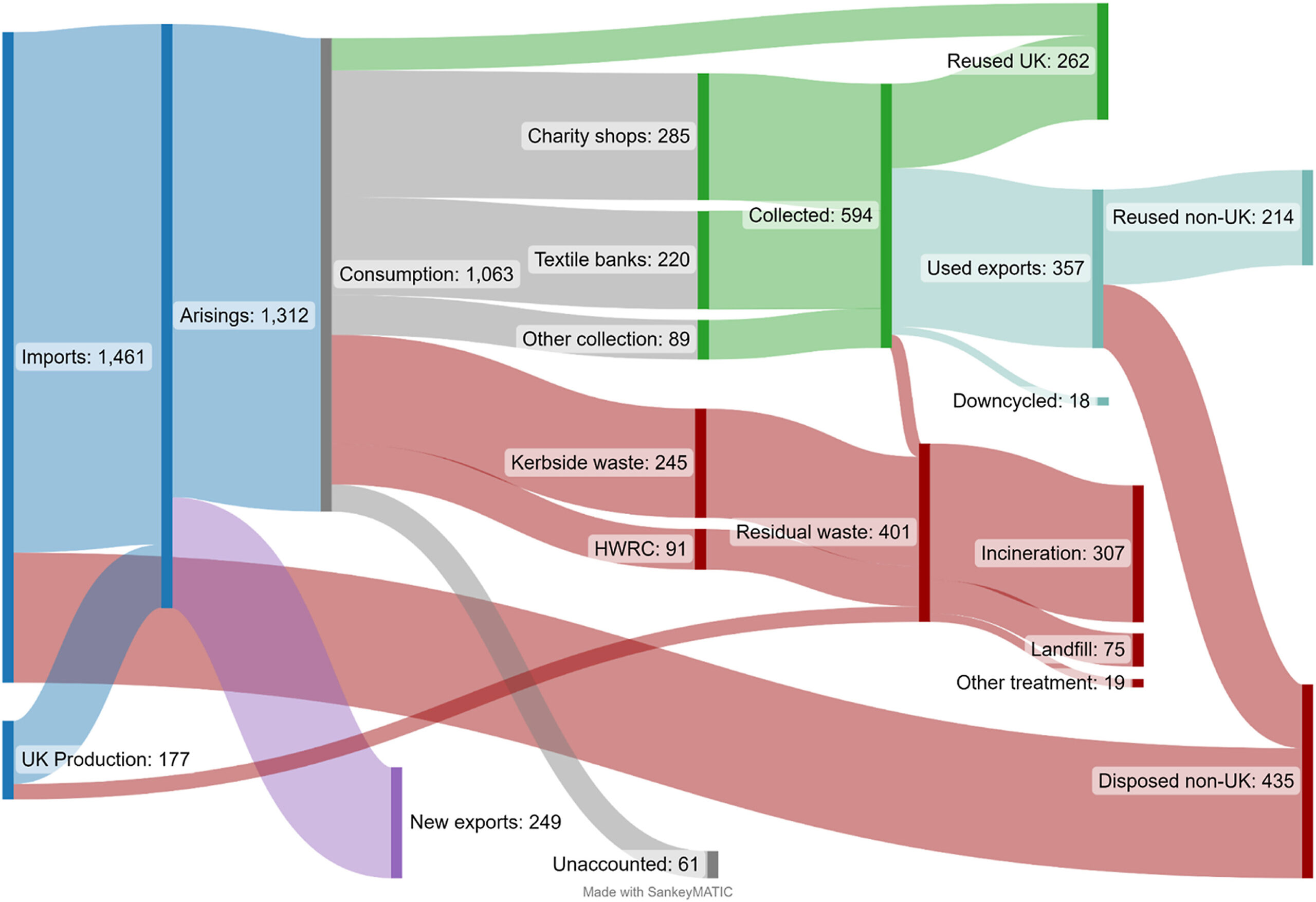 Fig. 1. Mass flow analysis of the UK clothing economy in 2018 (with flows originating on the left), from imports and UK production (dark blue) through to UK reuse (green), non-UK reuse (light blue) and disposals (red). Numbers indicate the size of the mass flows, in kilotonnes, at each point of the system. (For interpretation of the references to colour in this figure legend, ref to the web version of this article.)
Fig. 1. Mass flow analysis of the UK clothing economy in 2018 (with flows originating on the left), from imports and UK production (dark blue) through to UK reuse (green), non-UK reuse (light blue) and disposals (red). Numbers indicate the size of the mass flows, in kilotonnes, at each point of the system. (For interpretation of the references to colour in this figure legend, ref to the web version of this article.)
A material flow analysis of the UK clothing economy
Historically, clothing accounted for a significant proportion of annual income for most UK citizens, so items were carefully preserved and often passed down through generations. In the 21st century, however, just 40 min of work at minimum wage is sufficient to purchase a dress, shirt, or pair of trousers that may be discarded after a handful of uses. UK per-capita clothing consumption is 2–3 times the global average, reliant on international supply chains associated with many environmental and social issues. Steering the clothing system towards ecological sustainability requires wide-ranging strategies, but the lack of data on flows of clothing makes it difficult to quantify the impacts of current production and consumption, let alone design and evaluate sustainability interventions. Here we use material flow analysis to track clothing flows through the UK economy as a prelude to considering embodied carbon and changes in economic value across the system. Our results show the system is characterised by relatively high rates of reuse but very low rates of recycling. More clothing is destroyed (via landfill and incineration) than is reused and recycled. Consequently, reducing consumption of new clothing by just ∼4% would be as effective for reducing waste as doubling current recycling activity. The UK also imports eight times more clothing than it produces, but offshores over half of the associated textile waste. In our carbon analysis, uncertainty is the key theme – estimates put the cradle-to-consumer emissions associated with 2018 UK clothing consumption anywhere from 9 Mt.CO2e to over 30 Mt.CO2e. Our economic analysis shows substantial, but unsurprising losses in economic value of clothing as it flows through the economy, with some unexpected nuances. Improving the accuracy of current flow and impact data is critical for understanding how the clothing system can be most effectively moved towards circularity.
Joel Millward-Hopkins, Phil Purnell, Sharon Baurley,
A material flow analysis of the UK clothing economy, Journal of Cleaner Production, Volume 407, 2023, https://doi.org/10.1016/j.jclepro.2023.137158